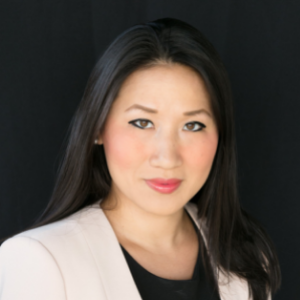OP-Ed: Six Hallmarks Of Rebuilding Strong Relationships at Work
 As we come out of the pandemic, rebuilding strong relationships at work will require special attention. Strong relationships are crucial for success and satisfaction – they determine the extent to which our managers, direct reports and even colleagues outside our area provide us the information, resources, and support we need as well as their openness to influence and willingness to work out difficulties.
As we come out of the pandemic, rebuilding strong relationships at work will require special attention. Strong relationships are crucial for success and satisfaction – they determine the extent to which our managers, direct reports and even colleagues outside our area provide us the information, resources, and support we need as well as their openness to influence and willingness to work out difficulties.
Those relationships have suffered during the last 18 months. Tasks have been more foregrounded and personal connection backgrounded, as Zoom exhaustion, phone and email replaced the informal in-person contact that often builds connection.
Returning to working in person creates opportunities to build and rebuild strong, functional relationships. And there are challenges. We can’t just “flip a switch” and return to how it was before. Jobs have changed, and so have our needs. Some colleagues left and new ones were hired who we haven’t met in person. Some are happy to be back, others aren’t. Old habits and approaches might no longer work. We feel pressured to make up for lost time, leaving us without the luxury of letting new relationships develop over time. What to do?
We have studied what it takes to proactively build strong relationships quickly at Stanford’s Graduate School of Business for decades and know that relationships exist on a continuum from contact with no connection/casual to closer/more personal and ultimately to what we call exceptional. There are six hallmarks to moving along that continuum.
Six Hallmarks of Relationship Building
The first is I can be more fully myself and so can you. With someone new we tend to be cautious. As the relationship develops, we disclose more, which decreases misunderstandings and increases ways to connect. It also encourages the other to share, since disclosure tends to be reciprocal.
This relates to the second hallmark: both of you are willing to be vulnerable. What can I do to encourage you to disclose besides initiating? I can learn how to ask questions that convey I really want to know you and what matters to you. Reciprocal sharing and vulnerability build trust and understanding.
Disclosure feels risky. The third hallmark is therefore trust that what I share will not be used against me. That trust is built over time as you each take incrementally larger risks in becoming known to each other.
Fourth is, a willingness to be honest with each other. Do I know that you mean what you say so I don’t have to read between the lines or worry about what you are withholding and vice versa?
As we share more of ourselves, deepen our relationship, and work together, disagreements are inevitable, and conflicts might emerge. The fifth hallmark is dealing with disagreements and conflict productively in ways that further build the relationship.
The final hallmark is both of us are committed to each other’s growth. This may require raising difficult issues and giving challenging feedback, in service of each other’s learning and development.
Applying the Hallmarks In the Office
As we emerge from the pandemic, here is how these come into play. You have just returned to working in person and someone new has joined the team who you’ve never met or worked with. There are also team members with whom you are at the “mere contact” end of the continuum and others with whom you are a bit farther along. With some you are close. Maybe you have mixed feelings about some of these people. A couple of incidents during Zoom meetings annoyed you, which you didn’t raise. Time and performance pressures necessitate you move these relationships along the continuum to functional and robust quickly.
There are multiple ways to develop relationships and what is effective with one person might not be with another. With the new hire, you might start with sharing more of yourself as well as finding out how they like to get work done. For those where the relationship is not strong, talking about how each of you want to relate might help. In those cases where you’ve had negative interactions, it might be important to have an honest conversation about how to move past that and explore what there is to be learned.
People also differ in how they like to get work done. Some like to plan first, others like to take action to gather early data. Some are comfortable with risk, others more cautious, and so forth. Each of us has a strong preference for our style and yet organizations need them all.
In strong relationships we each leverage our style and work together productively. What do we do with conflict that arises when our styles differ? We learned firsthand when working together. David is a divergent thinker, always coming up with new ideas. Carole is more convergent and wants to “cut to the chase.” In discussing this openly, we realized we needed each other. If David was dominant, we might never have finished our book – if Carole’s was, our final product might not have been as good.
Returning to the office will require we double down on efforts to establish new relationships and reestablish previous ones. We can’t afford to “just let things develop.” We will have to make more intentional, conscious efforts. Doubling down requires paying even closer attention to how others get their work done and talking openly about preferences. We may need to be explicit and proactive. “I’m glad to respond to your requests, but it works better for me when I have advanced warning” could be all it takes.
Doubling down also means becoming aware of and willing to discuss entirely new issues, such as people’s preferences for in-person, hybrid or working at home for health reasons. We may need to be clearer about how tasks are to be divided up and handed off. Learning to empathize with someone whose pandemic experience (and post pandemic reality) is very different from ours will also matter.
We’ll need to respond differently to small annoyances, which are more likely when starting or reestablishing relationships. Your way of working bothers me a bit. But rather than just shoving my frustration under the rug and blaming you, this could be a sign we have something to work on and an opportunity for mutual learning and a better relationship.
To do this we will have to acknowledge the legitimacy of different approaches and further develop our problem-solving skills. It is less useful to try to convince the other and more useful to jointly explore what will work for both of us. That process, rather than distancing us, can further reestablish healthy work relationships and build even stronger ones.
Everything is unlikely to work out from the beginning, even with proactive outreach. Building and rebuilding relationships is a process that requires learning from what doesn’t work as much as from what does. It demands persistence, intention, and patience. But quickly building and rebuilding stronger relationships is well worth the effort.
David Bradford, Ph.D. is the Eugene O’Kelly II Senior Lecturer Emeritus in Leadership at Stanford Graduate School of Business, where he helped develop Interpersonal Dynamics (aka “Touchy Feely”) as well as much of the school’s leadership curriculum. He is the author of numerous books, including Managing for Excellence, Influence Without Authority, and Power Up. He lives in Berkeley, California, with his wife of more than fifty years.
Carole Robin, Ph.D. was the Dorothy J. King Lecturer in Leadership and Director of the Arbuckle Leadership Fellows Program at Stanford Graduate School of Business before co-founding Leaders in Tech, which brings the principles and process of “Touchy Feely” to executives in Silicon Valley. Prior to coming to Stanford, she had careers in sales and marketing management and was a partner in two consulting firms. She lives in San Francisco, California, with her husband of 36 years.
A fuller description of these six hallmarks and how to use them to build relationships can be found in CONNECT: Building Exceptional Relationships with Family, Friends, and Colleagues by co-authors David Bradford and Carole Robin. Crown Random House, New York. 2021. Their book also contains the lessons of “Touchy Feely” that thousands of students have consistently described for decades as life changing. Available in hardcover, audible and Kindle versions HERE.








